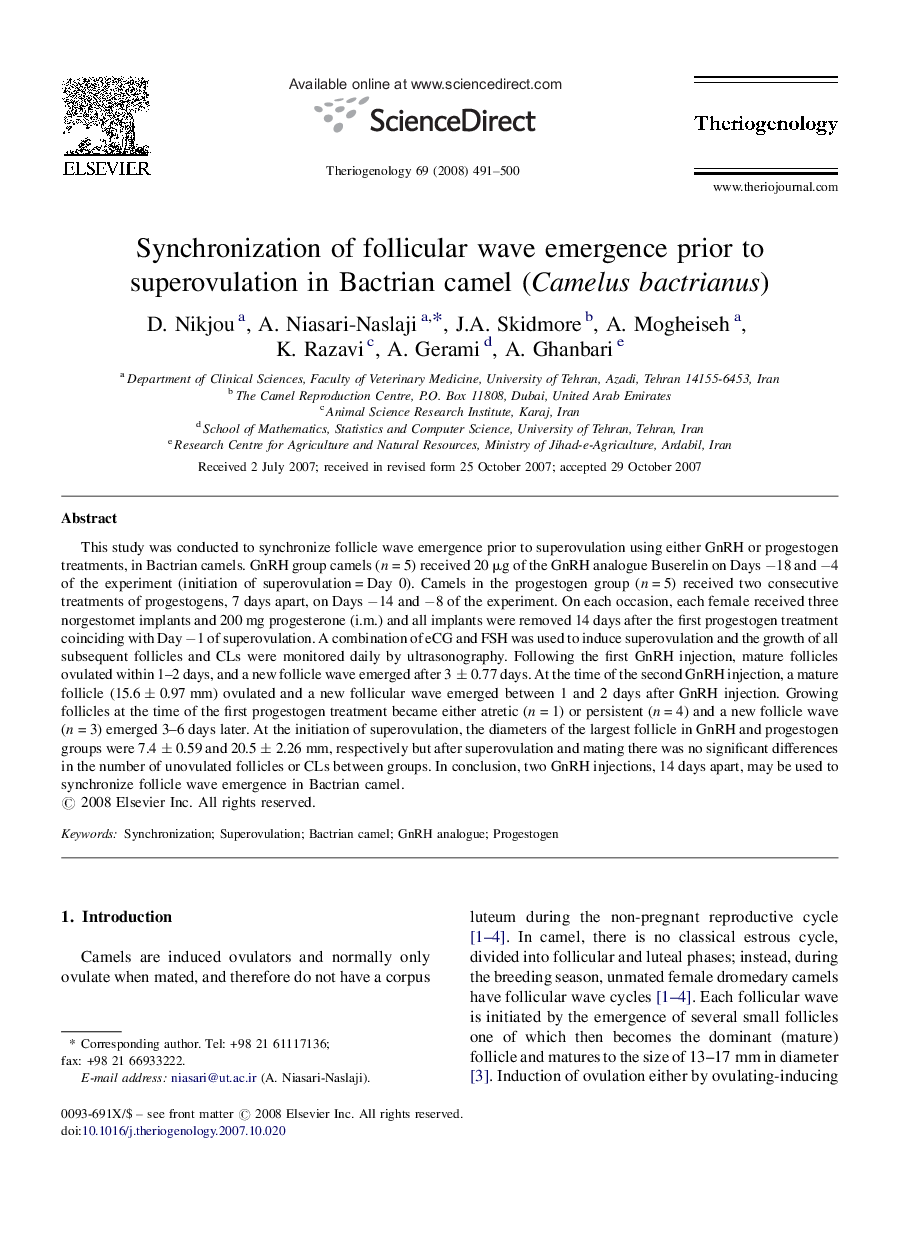| Article ID | Journal | Published Year | Pages | File Type |
|---|---|---|---|---|
| 2096211 | Theriogenology | 2008 | 10 Pages |
This study was conducted to synchronize follicle wave emergence prior to superovulation using either GnRH or progestogen treatments, in Bactrian camels. GnRH group camels (n = 5) received 20 μg of the GnRH analogue Buserelin on Days −18 and −4 of the experiment (initiation of superovulation = Day 0). Camels in the progestogen group (n = 5) received two consecutive treatments of progestogens, 7 days apart, on Days −14 and −8 of the experiment. On each occasion, each female received three norgestomet implants and 200 mg progesterone (i.m.) and all implants were removed 14 days after the first progestogen treatment coinciding with Day −1 of superovulation. A combination of eCG and FSH was used to induce superovulation and the growth of all subsequent follicles and CLs were monitored daily by ultrasonography. Following the first GnRH injection, mature follicles ovulated within 1–2 days, and a new follicle wave emerged after 3 ± 0.77 days. At the time of the second GnRH injection, a mature follicle (15.6 ± 0.97 mm) ovulated and a new follicular wave emerged between 1 and 2 days after GnRH injection. Growing follicles at the time of the first progestogen treatment became either atretic (n = 1) or persistent (n = 4) and a new follicle wave (n = 3) emerged 3–6 days later. At the initiation of superovulation, the diameters of the largest follicle in GnRH and progestogen groups were 7.4 ± 0.59 and 20.5 ± 2.26 mm, respectively but after superovulation and mating there was no significant differences in the number of unovulated follicles or CLs between groups. In conclusion, two GnRH injections, 14 days apart, may be used to synchronize follicle wave emergence in Bactrian camel.
